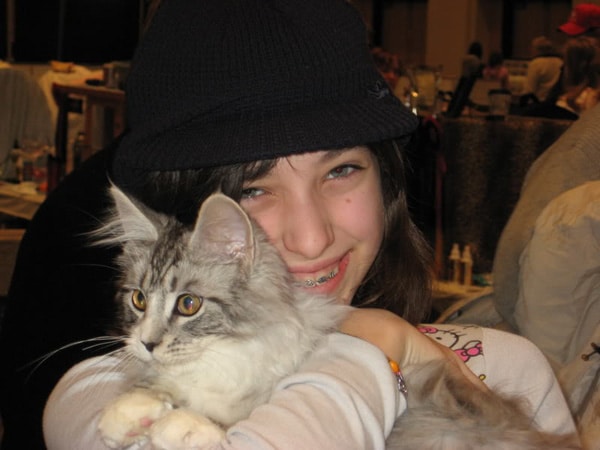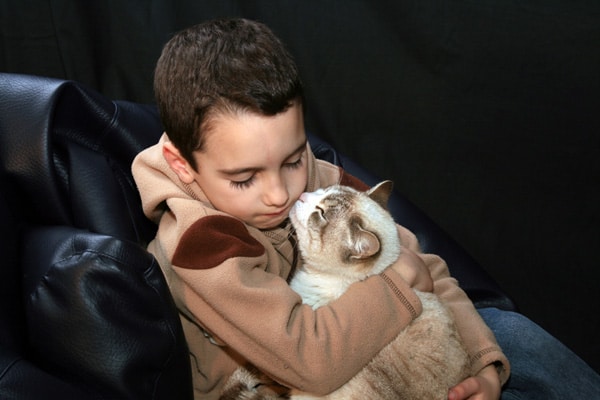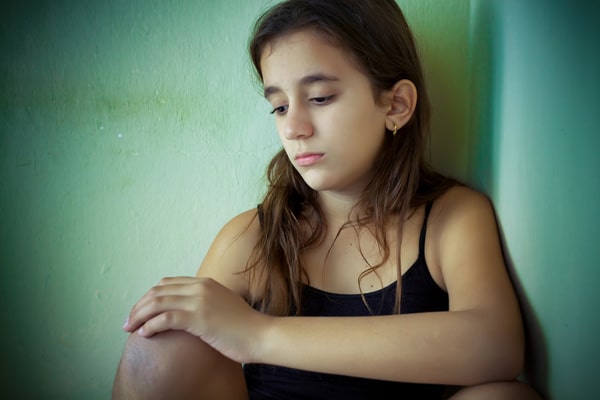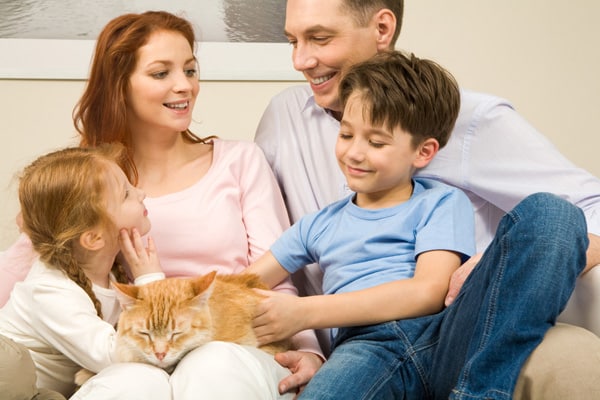If you share your home with a cat, I’m sure you’ll agree that they’re great companions and unknowingly offer therapy to us on many levels. Multiple studies show that a pet can help reduce stress and even lower blood pressure. For those who live with depression or anxiety, pets can truly be an integral part of getting through the day and overcoming challenges. This is true for both adults and children.
Some of us don’t often think about kids having depression or anxiety. Harold S. Koplewicz, MD, founder and director of the New York University Child Study Center and director of adolescent and child psychiatry at NYU/Belleview Hospital Center, is one of the experts who says anxiety is the underlying issue of depression in younger children. He told Web MD: “Depression in preteen children is a rare phenomenon. They don’t have the right chemical or anatomical changes that put you at risk.” He says that before adolescence, the equivalent of depression is anxiety and after puberty, some anxiety turns into depression.

According to the Academy of Anxiety and Depression of America, anxiety disorders affect one in eight children. This is a subject that’s close to my heart because both my daughter and I live with anxiety, and my daughter suffers from mild depression as well. Our cats have been the best possible therapy for both of us, but especially for my daughter. I’ve seen firsthand how the healing power of felines has helped her through bouts of worry and intense sadness, and I couldn’t be a bigger advocate for bringing them into a child’s official or unofficial therapy regimen.
Many times when we think “therapy animal,” our mind automatically goes to “dog.” It’s true that dogs are excellent companions and assist humans to cope in a variety of ways. Cats can certainly be certified as official therapy animals, but it’s not necessary to have a certified therapy cat to help your child with symptoms of anxiety and depression.

If you don’t already have a cat or your current cat isn’t very social and you’re considering adopting another one for the purposes of therapy, it’s important to make sure the cat has the right sort of personality for such an intention. Look for a social cat who has a calm demeanor and doesn’t mind being handled.
Here are five ways a cat can help a child with anxiety and/or depression:
1. Unconditional, uncomplicated friendship
Cats just love. They don’t ask for anything, they don’t judge us or make demands. There’s nothing complicated about a relationship with a cat. This is reassuring for children who sometimes feel afraid or anxious about making or maintaining friendships at school. I remember a time my daughter was having trouble during middle school and always referred to our cat, Phoebe, as her very best friend. There was no drama, no disappointment and no feeling of having to please her. They just “were.”

2. Responsibility and routine
For a child whose feelings feel out of control, a sense of routine and responsibility can create purpose and logic where there sometimes seems to be none. Cats need to be fed at certain times each day and the litter box requires scooping. These are great age-appropriate jobs for children. The sense of feeling needed is another benefit to taking care of cats. Kids with anxiety or depression sometimes feel lost and without purpose. Taking care of another living being helps give them a little direction.

3. Distraction
My daughter and I both have anxious symptoms of excessive worry, a common trait of generalized anxiety disorder. It can feel challenging to turn our brains off when the mind monkeys dive in and take over our thoughts. One of the suggestions experts offer is to create distractions for yourself when this happens. This can include reading, drawing, playing a game, calling a friend or playing with a cat! Playing with kitty is a surefire mood-booster. It’s hard not to laugh while watching her chase the feather-on-a-wand toy or bat a toy mouse across the kitchen floor.

4. Social comfort
If an anxious or depressed child is having trouble extending themselves with others, a cat is a great way to help nudge them into more social situations. Perhaps they could invite a friend over to play together with the cat. The child is already comfortable with kitty, so the cat becomes a confidence booster during their time together.
5. Physical contact and touch
Physical touch is healing for everyone. Sometimes children with anxiety or depression require extra reassurance and hugs. As parents or caregivers, we can certainly provide this, but the touch and acceptance of a furry friend is extra-healing. This is why it’s important that your child interact with a cat who enjoys being held.
Do you have experience with using cats to help kids with anxiety or depression? Tell us about it in the comments!
++++
About the Author: Angie Bailey is a goofy girl with freckles and giant smile who wants everyone to be her friend. Loves pre-adolescent boy humor, puns, making up parody songs, and thinking about cats doing people things. Writes Catladyland, a cat humor blog, and authored whiskerslist: the kitty classifieds, a silly book about cats wheeling and dealing online. Partner in a production company and writes and acts in comedy web series that may or may not offend people. Mother to two humans and three cats, all of which want her to make them food.
Read more by Angie Bailey:








